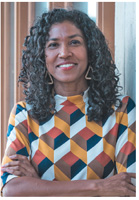|
April 2018

Issue Home >>
|


 Insurance is an ancient practice that dates back to early human society and monetary economies. It was developed to respond to monetary risks and practised by Chinese and Babylonian traders as long ago as the 3rd and 2nd millennia BC, (as written about by Vaughan, E. J., 1997, Risk Management, New York: Wiley.) Merchants would pay an extra sum for their loan to be cancelled should their shipment be lost or stolen at sea. One of the most famous examples of this is Lloyd’s of London with its list of “Names” or underwriters, who determine the risk of a potential client and the cost of that risk to the client. The notion of putting away a little, each month, each year, for yourself or giving it to an insurance company in the form of a premium for when you most need it and for emergencies, is one way of making the unknown future as secure as possible. Insurance is an ancient practice that dates back to early human society and monetary economies. It was developed to respond to monetary risks and practised by Chinese and Babylonian traders as long ago as the 3rd and 2nd millennia BC, (as written about by Vaughan, E. J., 1997, Risk Management, New York: Wiley.) Merchants would pay an extra sum for their loan to be cancelled should their shipment be lost or stolen at sea. One of the most famous examples of this is Lloyd’s of London with its list of “Names” or underwriters, who determine the risk of a potential client and the cost of that risk to the client. The notion of putting away a little, each month, each year, for yourself or giving it to an insurance company in the form of a premium for when you most need it and for emergencies, is one way of making the unknown future as secure as possible.
Storytelling is woven into the development and survival of our societies and is part of our coping mechanism as humans, given the unknown future we face. As a result, stories and other art forms can be viewed collectively as cultural artifacts. In this way they can then be seen as “cultural insurance,” which means that they are able to provide comfort, relief and hope during periods of bankruptcy, upheaval, strife and loss. Regardless of whatever form, be it books, music, art, film, or television – the collection and documentation of cultural artifacts is the legacy and security of a people.
A hurricane blows away crops and housing. A flood washes away more than just buildings and streets. A fire leaves only ash traces of lived lives. Violence robs individuals of peace of mind and the ability to breathe deeply. The loss of a loved one darkens the light. So just as financial insurance helps individuals or companies get back on their feet, cultural insurance, in the form of words or images, potentially offers the same relief to a society and its members. If we are sick we need healing. If we are scared we seek comfort. In a crisis or emergency, cultural insurance can be there for us, giving back our integrity and self-confidence.
In this way, isn’t it then possible to consider stories or art as value-added insurance? This is done by individual purchase and through private collection but how is it capitalized on for members of the public in need? How can museums serve as insurance companies for disadvantaged or compromised populations? Is a library a bank, gathering and lending our currency back to us? Can archives become disseminators and not just curators or gatekeepers? How do all of these institutions respond to risks and emergencies? How can rich collections of cultural artifacts be used as payback, where and when most needed, and how is it re-distributed? How do community members access their cultural insurance?
These questions are meant to both stimulate and challenge all of the stakeholders in this enterprise we call society, particularly those involved in the collection and distribution of our precious cultural artifacts. In other words, this is a call to stakeholders to identify specific ways in which collections of cultural artifacts can be used as cultural insurance. That these artifacts might be thought of as security and used for reassurance, in itself can be a way of insuring their social relevance. |





